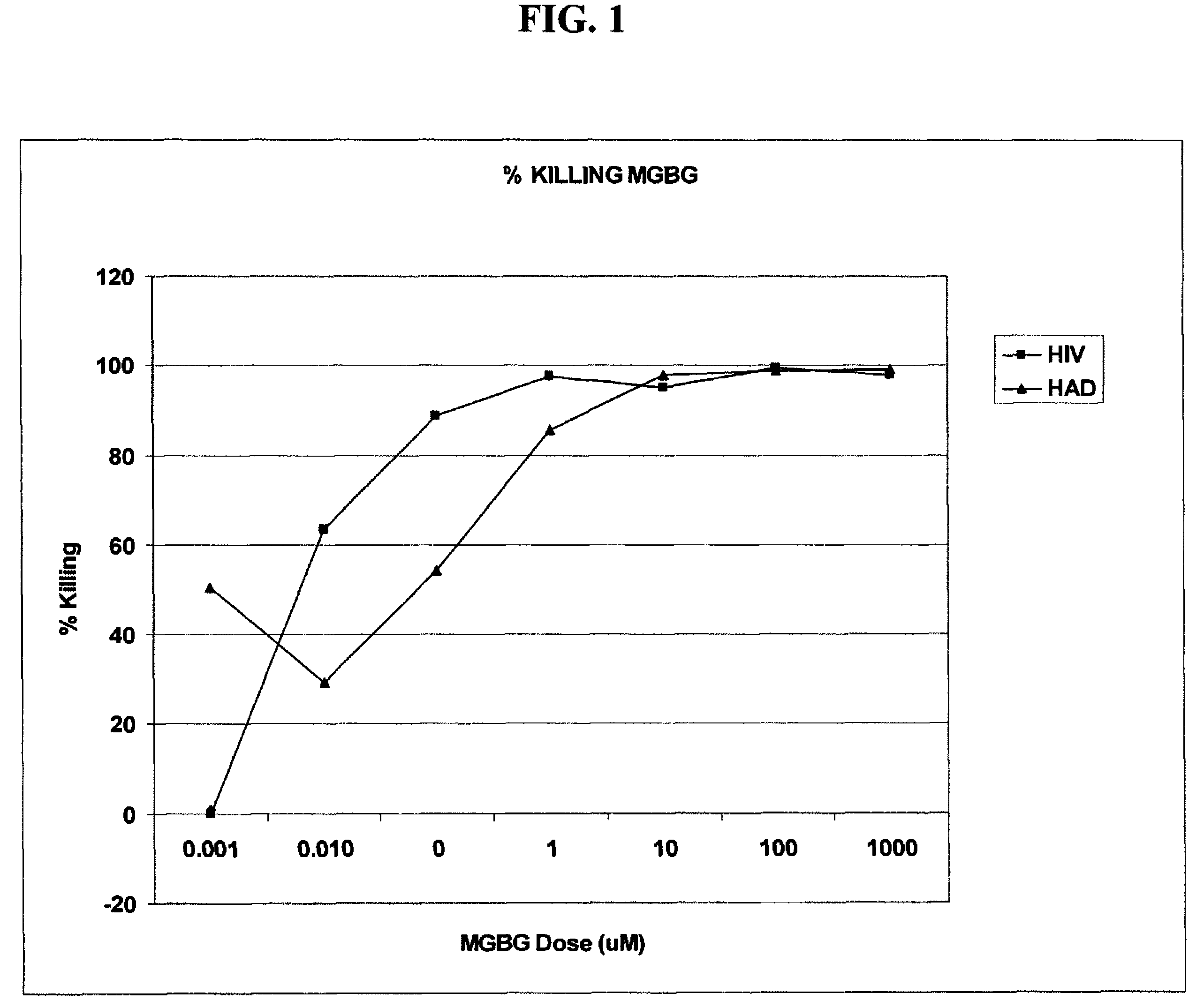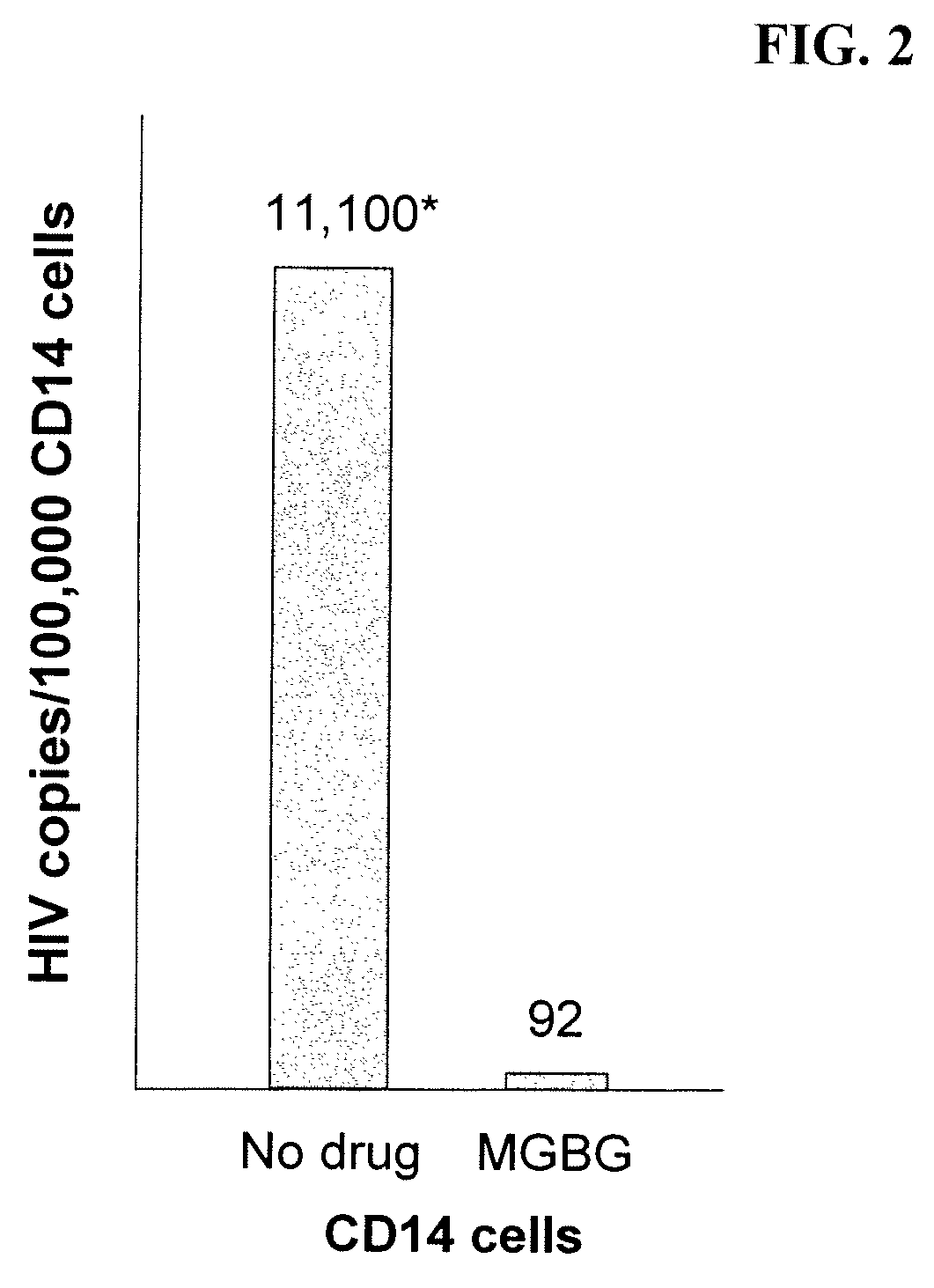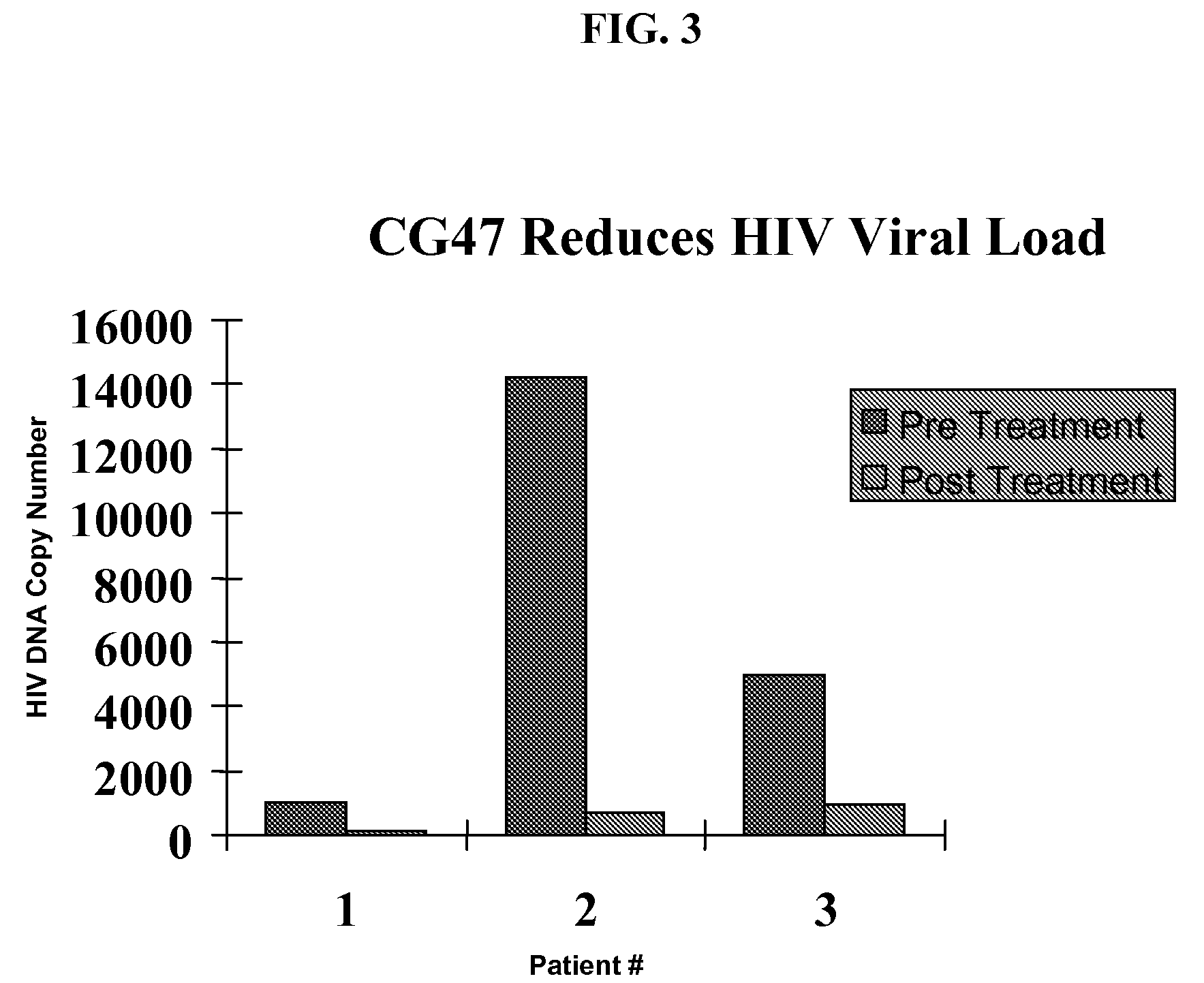Methods for treating viral infections using polyamine analogs
a technology of polyamine analogs and viral infections, applied in the field of polyamine analogs, can solve the problems of mgbg in an anti-cancer regimen that proved to be unacceptably toxic, its gradual withdrawal from clinical trials, and significant toxicity of mgbg
- Summary
- Abstract
- Description
- Claims
- Application Information
AI Technical Summary
Benefits of technology
Problems solved by technology
Method used
Image
Examples
example 1
Procedure / Protocol Followed for Susceptibility Assays
[0142]The following procedures / protocols were used in some of the examples that follow. All steps were performed in a biological safety cabinet using Universal Precautions for handling human blood samples and standard aseptic techniques.
[0143]Blood was drawn in heparinized tubes (green top Vacutainer tubes from Becton-Dickson) and Percol gradient separated into peripheral blood mononuclear cells (PBMCs), according to the following procedure. Aliquots of no more than 25 mL whole blood were transferred into clean, sterile, prelabeled 50 mL conical tubes. Using a sterile 25 mL pipet, equal volume of PBS (Mg+2 / Ca+2 free) was added to the whole blood and the tubes were inverted 2 or 3 times. This resulted in a 1:1 dilution of the blood. (For example: 10 mL whole blood +10 mL PBS.)
[0144]The Percol (1.087 grams / mL) was made according to the following formulation: 25 mL Percol (Amersham, Piscataway, N.J.), 11 mL Sterile water and 4 mL 10×...
example 2
Effect of MGBG on CD14 / 16+Blood Macrophages Infected with HIV
[0153]The present example illustrates the effect of MGBG on CD14 / CD16+ blood macrophages from HIV-positive and HIV-associated dementia (HAD) patients. A susceptibility assay (described above) was performed on blood cells from three sets of four patients. Representative curves of percent of CD14 / 16+blood macrophages killed versus MGBG concentration are reproduced in FIG. 1.
[0154]As shown in FIG. 1, MGBG killed the HIV infected macrophages in a dose-dependent manner. Complete killing of CD14 / 16+ cells that contain HIV DNA was observed at 1 μM of the drug. MGBG was nearly as effective in killing HIV-infected macrophages from HAD patients. This data demonstrates that MGBG causes the destruction of macrophages harboring HIV and should be helpful in eliminating these persistent reservoirs of HIV and thus useful in the treatment of AIDS.
example 3
[0155]Blood from patients with advanced HIV disease was Percol gradient separated into peripheral blood mononuclear cells (PBMCs) and 5 million cells from each specimen were exposed to a 1 μM concentration of MGBG or control saline for five days. Immunophenotypic analysis showed >80% killing of the CD14 / CD16 blood macrophage population. After the five day incubation, CD14 immunomagnetic separation with a Miltenyi separation system was performed. Separated CD14 cells from treated and untreated control specimens were evaluated for the level of HIV DNA in each specimen. C-jun, single copy DNA controls were utilized in each specimen to provide the HIV DNA / genomic equivalent values as determined by quantitative DNA PCR analysis as described in Mack, K. D., et al. JAIDS (2003) 33: 308-20. Pretreatment (no drug) values of HIV DNA copy number / 100,000 cell equivalents are compared to HIV copy numbers in the treated specimens. All values are for HIV DNA copy numbers in isolated CD14 cell popu...
PUM
| Property | Measurement | Unit |
|---|---|---|
| half life | aaaaa | aaaaa |
| half life | aaaaa | aaaaa |
| time | aaaaa | aaaaa |
Abstract
Description
Claims
Application Information
 Login to View More
Login to View More - R&D
- Intellectual Property
- Life Sciences
- Materials
- Tech Scout
- Unparalleled Data Quality
- Higher Quality Content
- 60% Fewer Hallucinations
Browse by: Latest US Patents, China's latest patents, Technical Efficacy Thesaurus, Application Domain, Technology Topic, Popular Technical Reports.
© 2025 PatSnap. All rights reserved.Legal|Privacy policy|Modern Slavery Act Transparency Statement|Sitemap|About US| Contact US: help@patsnap.com



